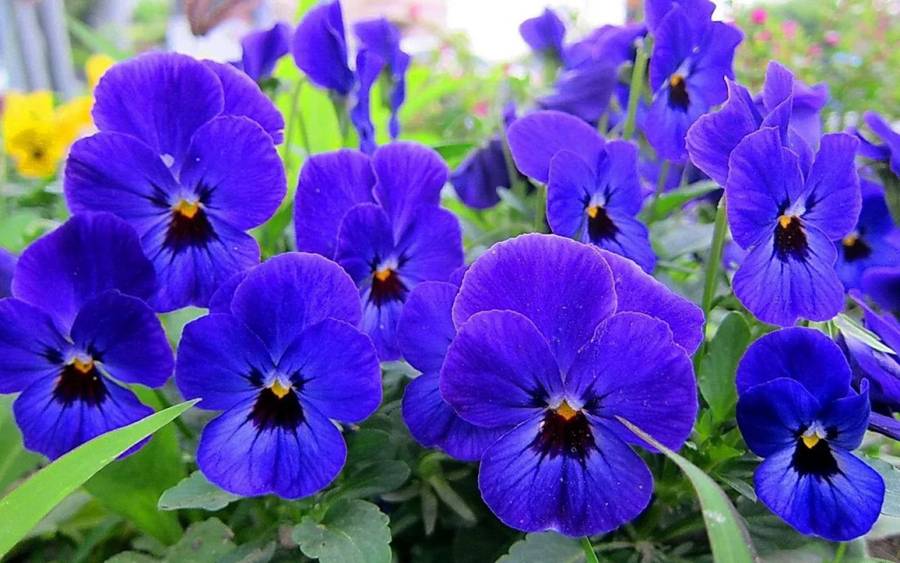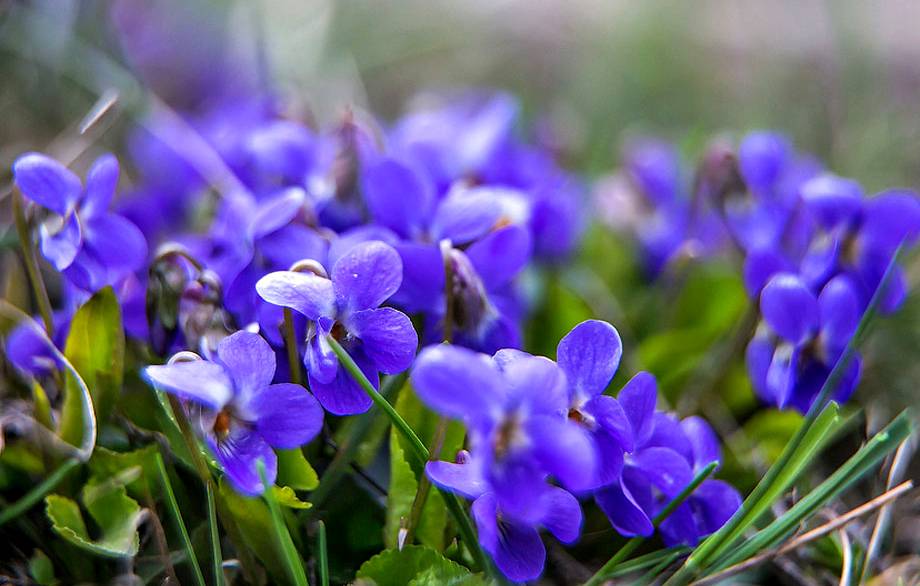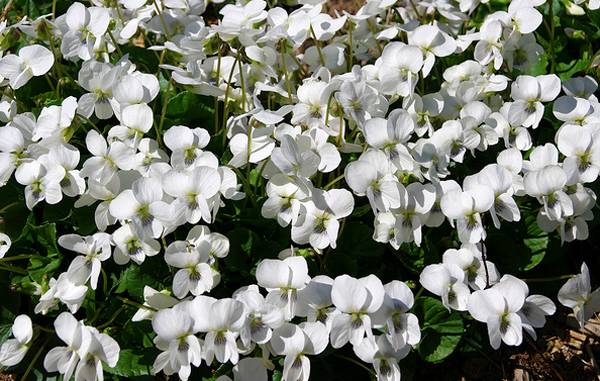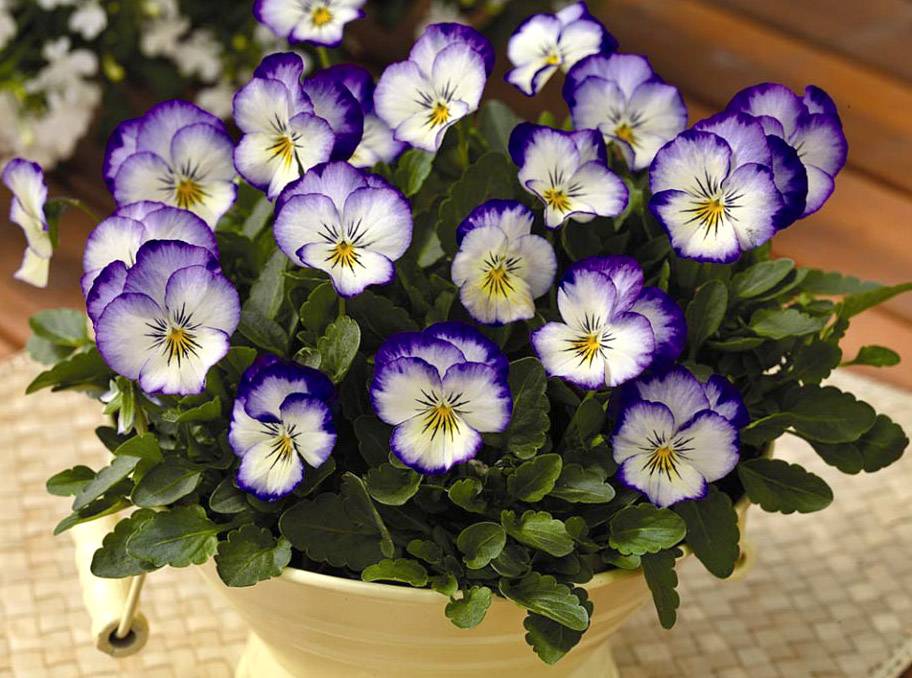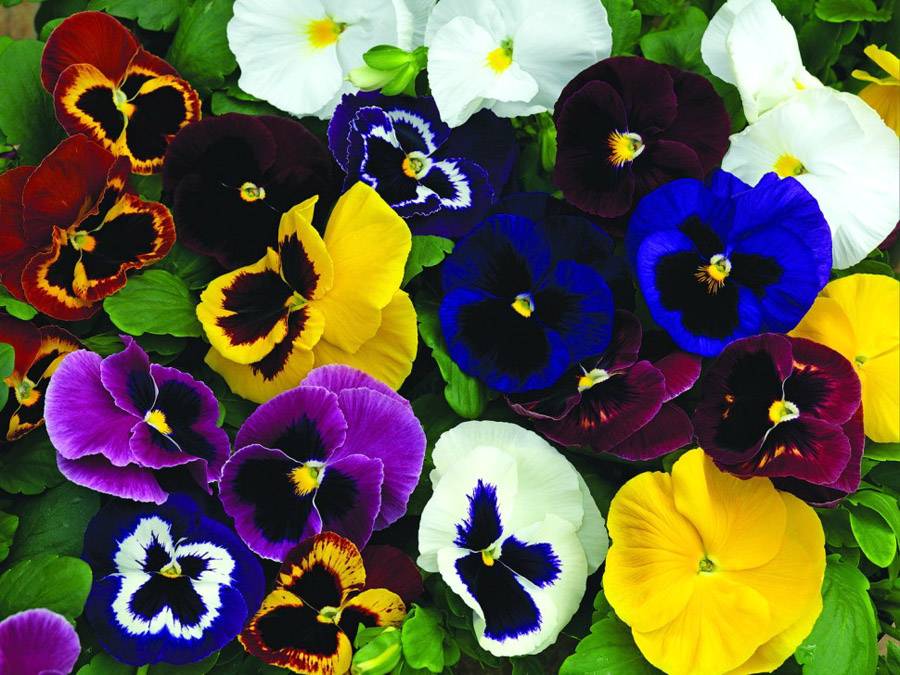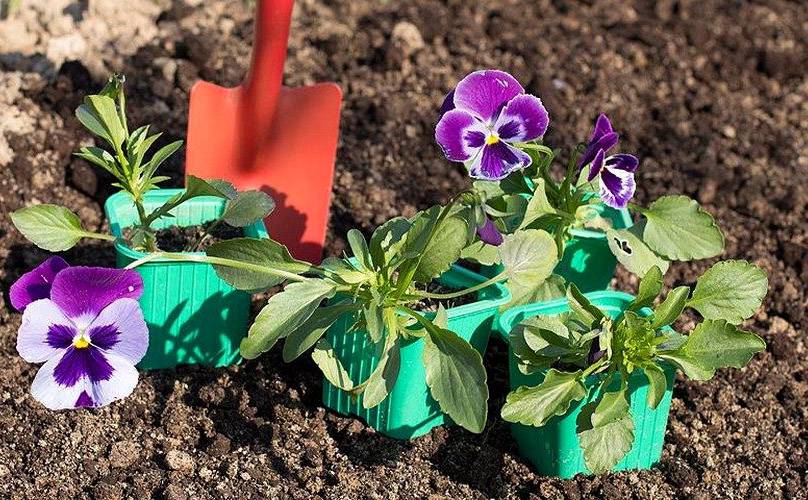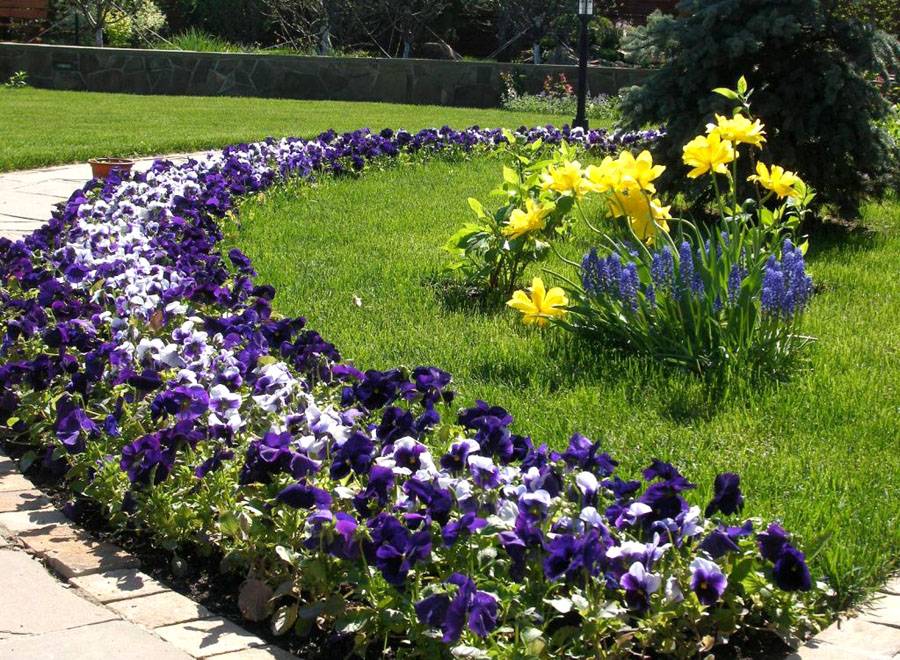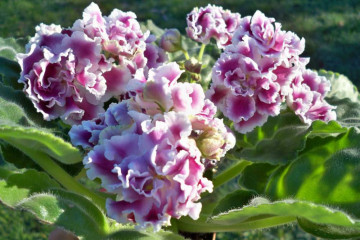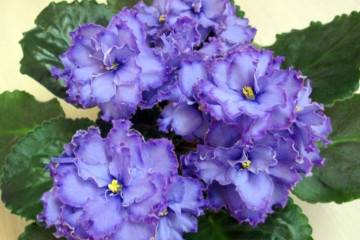Garden violet - description, varieties and characteristics of varieties
Content:
Many gardeners prefer beautiful and unpretentious flowers in care, which delight with their bright and long flowering. That is why the street violet in the garden takes pride of place. This cute and delicate flower is a symbol of spring, love and fidelity. This article will tell you about which species of this plant are most common, how they bloom and what conditions for their cultivation.
Types of garden violets and their features
Violet is a fairly common plant that grows in the European and central parts of Eurasia. Some species are also found in North America. It has been known since the times of the Roman Empire, which is where its main name Viola came from. At that time, there were only perennial wild-growing species, such as fragrant violet, moth violet, etc.
Fragrant violet garden perennial
This is perhaps the most unpretentious species of the Viola family. It often happens that this flower itself starts on the site, since this wild plant is actively propagated by seeds. Also rooted easily with a creeping stem. But you shouldn't worry that she will behave like a weed. She usually settles in one meadow and pleases with her abundant flowering from the last days of March to the end of May.
The garden violet grows in small bushes with a very branched root. Leaves are simple, solitary, heart-shaped. Peduncles do not branch, but have one flower each. This species is undersized, up to 10-12 cm tall. The flowers are also quite small, 1-1.5 cm in diameter.
The color of wild species is predominantly purple: from light lilac, closer to blue, to dark. Ornamental varieties can have terry petals of a bright shade.
The fragrant violet is very fragrant, which is what its name says. For this, many also love her.
In nature, it grows in meadows and glades, in a thin deciduous forest. In the garden, he prefers a sunny place with partial shade. In Russia, it lives in the Middle zone.
Violet white moth
Looking at these flowers, at first glance it may seem that a flock of white moths has sat down on the clearing. Hence the name. This species is very reminiscent of a fragrant violet, but its flowers and leaves are larger. The height of the plant reaches 20 cm, and the diameter of the flowers is 2.5 cm.
In the wild, the moth violet is common in North America, but it feels great in Russian latitudes.
There are decorative varieties of this type, for example, Freckles. This is a viola with larger, brightly colored flowers. Best known as sister violet. It is distinguished by its light petals with purple dots. There are also other colors: blue, purple, yellow.
The flowering time of the violet moth white perennial coincides with the odorous one. Sometimes it blooms again in late summer. Prefers partial shade.
Horned violet
This look is more decorative. The flowers are much larger than those of a simple violet, with a diameter of 3 to 5 cm.Depending on the variety, the total height is 10-30 cm.
Just like the previous viols, it bushes well thanks to creeping stems and roots, forming bright flowering meadows.
This species differs in very bright and varied colors from the lightest tones to dark purple. The petals can be either monochromatic with a yellow or white core, or two or three colors.
Horned viola is a perennial. Unlike simple varieties, it blooms for a longer time: from April to October. In hot dry summers, flowering can be suspended in July-August.
Violet Wittrock
Vittroka is the most diverse flower in terms of colors and decorativeness, popularly known as pansies. This species does not occur in the wild, as it was completely bred by breeders. Compared to its scent violet ancestor, the diameter of Vittrock's flowers exceeds 10 times, and the variety of colors is amazing.
Pansies are annuals or biennials. Flowering lasts from April to October, but can take a break in mid-summer and resume by autumn. In a cool rainy summer, it will bloom continuously.
Planting and leaving
The maintenance of the garden violet is not difficult. She, like other crops, prefers drained, fertile soil types.
The garden bed is prepared in the fall. To do this, you need to add good plant humus or rotted manure. In the spring, the prepared soil is dug up and after a couple of weeks, plants can be planted.
So that the flowers do not grow smaller and actively bloom all summer, the viola is fed with mineral fertilizer 2-3 times a season.
Viola loves watering in moderation and regularly. Heat and drought does not tolerate well, as does excess moisture. Therefore, you need to water often, but dosed.
In addition, the main care is the timely weeding and loosening.
Features of planting seedlings
Cultivation of violets on the street is carried out by seedling or sowing. The first is more preferable for capricious hybrids, since it increases the likelihood of seedlings.
To do this, the seeds are sown in prepared boxes or cassettes with peat and sprinkled with earth with a layer of 0.5-1 cm. Then they are removed under a film in a warm, bright place. After germination, the temperature is reduced. In the phase of the appearance of two true leaves, the seedlings dive. After rooting, they are quenched at a temperature of 10 ° C. Plants are planted in open ground at the age of 2 months.
Features of planting seeds
You can also grow a garden violet by direct sowing in open ground. Usually this is done in June-July, so that by the onset of cold weather the seedlings grow and get stronger. In this case, flowering can only be expected for the next season. But the first flowers will delight from early spring.
Seeds are sown on a prepared, well-drained garden bed. Seedlings appear within 2-3 weeks.
The disadvantage of this method is that in the middle of summer the heat has a bad effect on the seedlings; constant monitoring of the moisture and condition of the plants is needed.Therefore, it is recommended to grow in this way in partial shade and during a period of slight cold snap after the first shoots. You can also sow seeds in the winter, then the seedlings will appear in early spring, but they will already be hardened.
If the violet is wild, it can self-propagate. In this case, it is better to plant young seedlings from the mother bushes in order to rejuvenate the population.
Pest prevention
The main enemy of the garden violet in a humid and cool environment is slugs. They love to feast on its leaves and stems. Therefore, in a cold rainy summer, it is better to plant the viola in a sunny place and not thicken it too much.
Another gluttonous pest is the violet mother-of-pearl, as well as the clover caterpillar. A small number of pests can be harvested by hand. In case of a strong infestation of insects, especially small ones such as aphids or spider mites, insecticides will help.
The violet can also be affected by fungal diseases such as powdery mildew, gray mold, black leg, etc. Prevention in this case consists of moderate watering and timely removal of the affected plants. It also helps to strengthen the plant's immunity by spraying with preparations containing live bacteria, such as phytosporin, Baikal EM, etc.
Indoor cultivation
Many amateur flower growers perceive the violet as a houseplant. However, it is not. Viola naturally grows in regions with temperate and cool climates and tolerates frosty winters well. For her, this is a kind of rest, therefore, even growing pansies on the windowsill, it will not be possible to achieve year-round flowering.
Garden violet does not tolerate prolonged heat, lack of sufficient sunlight and fresh air. But this does not mean that pansies cannot be grown on a windowsill. In principle, it is possible, but some important factors must be taken into account:
- in a closed room, it is better to place a pots with a viola on the east or west well-lit windowsill;
- the temperature should be no higher than 25 ° C. Ideally 15-20 ° C, but lower is possible;
- indoors, the garden violet must be fed every week with complex fertilizer for flowering crops;
- the room with the flower must be well ventilated. Viols feel best on an open balcony or loggia;
- perennial varieties are best planted in the garden for the winter or left to winter on an uninsulated balcony. Before that, pre-cut ½ the height of the plant and mulch with peat, rotted sawdust or spruce branches.
Features of the reproduction of perennial garden violets
Viola can be propagated not only with the help of seeds. She also sits well vegetatively. This can be done in several ways.
- the simplest is the rooting of the layers. Lean a long shoot to the ground and sprinkle it on this place. Water regularly for 3-4 weeks. When the shoot gives its own roots, it is separated from the mother plant;
- by dividing the bush. To do this, a large violet bush is dug up and carefully divided into 2 or 3 parts. The separated plants are planted in a prepared and well-humid place. During the rooting period, the viola should be shaded for 2-3 weeks;
- grafting. For this, 5 cm high stems are cut from the bush, leaving 2-3 leaves on top. The lower part is stuck into prepared containers with moistened soil to a depth of 1-2 cm. The containers are covered with foil and left in a bright place protected from direct sunlight.Within a month, the cuttings should start up new roots and leaves.
Use in landscape design
The garden violet is widely used to decorate small flower beds, borders, alpine slides. Thanks to its compactness and lush flowering, a real blooming carpet appears. And the variety of varieties and shades helps to create magnificent flower arrangements. Indoors, viola is grown to decorate balconies and loggias. Ampel varieties of viola look very impressive in hanging pots. In private gardens, pansies take not the last place, both among primroses and late-flowering crops.
Having considered the description of the main types of garden violets, the peculiarities of their flowering and reproduction, the conclusion suggests itself that this culture is completely unpretentious. With simple care, it will be a great addition to the landscape design of the site.
